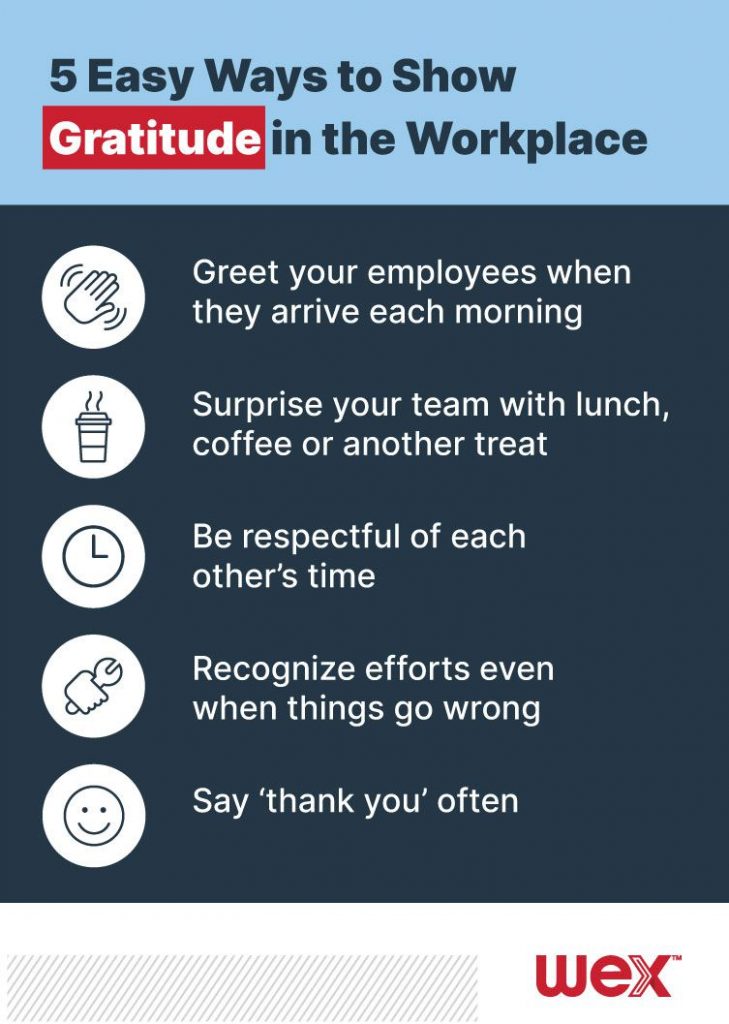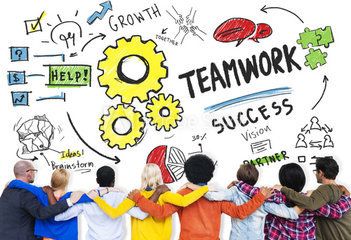Are you looking to create a more positive and productive team environment in your workplace? If so, incorporating gratitude practices into your daily routine could be the key. Gratitude has been shown to have numerous benefits, from improving employee satisfaction and loyalty to enhancing teamwork and reducing stress. In this article, we will explore the power of gratitude in the workplace and provide practical tips on how to foster a culture of appreciation within your team. By implementing these strategies, you can create a positive and harmonious work environment that promotes productivity and overall well-being. So, let’s get started and unlock the potential of gratitude in your organization!

This image is property of d34u8crftukxnk.cloudfront.net.
Benefits of Gratitude in the Workplace
In today’s fast-paced and competitive work environment, cultivating a culture of gratitude can have numerous benefits for both employees and organizations. Acknowledging and expressing gratitude not only improves employee morale but also increases motivation and productivity. Additionally, fostering gratitude in the workplace enhances teamwork and collaboration, reduces stress and burnout, and improves employee satisfaction and loyalty. By understanding and harnessing the power of gratitude, organizations can create a positive and productive team environment.
Improved Employee Morale
One of the key benefits of practicing gratitude in the workplace is improved employee morale. When employees feel appreciated and valued for their contributions, it boosts their overall job satisfaction and morale. Recognizing and acknowledging their efforts, whether big or small, makes them feel seen and heard, leading to increased motivation and engagement. Through gratitude, organizations can create a supportive and positive work environment that uplifts employees’ spirits and fosters a sense of belonging and purpose.
Increased Motivation and Productivity
Gratitude has a profound impact on employee motivation and productivity. When employees feel grateful for the opportunities and resources provided by their organization, they are more likely to go above and beyond to deliver exceptional results. Grateful employees have a higher sense of responsibility and take ownership of their work, leading to increased productivity. Moreover, expressing gratitude towards employees for their achievements and efforts reinforces positive behavior and encourages them to continue performing at their best.
Enhanced Teamwork and Collaboration
Gratitude plays a crucial role in fostering teamwork and collaboration within an organization. When individuals feel valued and appreciated, they are more inclined to work together and support one another, leading to improved team dynamics. Expressing gratitude towards teammates for their contributions and efforts promotes a sense of camaraderie and builds stronger bonds within the team. This, in turn, creates a supportive and collaborative work environment where individuals are motivated to share ideas, knowledge, and experiences, ultimately driving innovation and success.
Reduced Stress and Burnout
In a fast-paced work environment, stress and burnout can significantly impact employee well-being and productivity. However, practicing gratitude in the workplace can help alleviate these challenges. When employees feel appreciated and supported, it reduces their stress levels and promotes a positive mindset. Gratitude acts as a powerful antidote to workplace burnout, as it encourages individuals to focus on the positive aspects of their work and find joy in their accomplishments. By acknowledging and expressing gratitude, organizations can create a healthier and more balanced work environment.
Improved Employee Satisfaction and Loyalty
Organizations that prioritize gratitude in the workplace experience higher levels of employee satisfaction and loyalty. When employees feel valued and recognized for their contributions, their job satisfaction increases, leading to higher levels of commitment and loyalty towards the organization. Grateful employees are more likely to stay with their employers, reducing turnover rates and the associated costs. By fostering a culture of gratitude, organizations can create a positive and fulfilling work environment that attracts and retains top talent.
Creating a Culture of Gratitude
To reap the benefits of gratitude in the workplace, organizations must actively foster a culture that encourages and embraces gratitude. Here are some strategies to create a culture of gratitude within your organization:
Lead by Example
Leaders play a vital role in shaping organizational culture, and leading by example is crucial in fostering gratitude. When leaders express appreciation for their team members’ efforts and model gratitude in their interactions, it sets a positive tone for the entire organization. By embodying gratitude, leaders inspire and motivate their employees to adopt the same mindset and behaviors.
Encourage Open Communication
Promoting open and transparent communication is essential for cultivating a culture of gratitude. Encouraging employees to express their thoughts, ideas, and appreciation fosters a sense of psychological safety and belonging. Leaders should create opportunities for regular feedback sessions and actively solicit input from employees. This not only allows individuals to feel heard but also strengthens relationships and creates a culture of mutual respect and gratitude.
Recognize and Appreciate Individual Contributions
Acknowledging and appreciating individual contributions is a powerful way to instill gratitude within the workplace. Regularly recognizing employees’ achievements, whether publicly or privately, helps them feel valued and appreciated. This can be done through simple gestures such as saying “thank you” or offering specific praise for a job well done. Recognition programs or awards can also be implemented to formalize the appreciation process and make it a part of the organizational culture.
Promote a Supportive and Inclusive Environment
Creating a supportive and inclusive work environment is essential for fostering gratitude. When employees feel supported and valued for their unique perspectives and contributions, it enhances their sense of gratitude. Encouraging collaboration, diversity, and inclusion allows individuals to learn from one another and appreciate different viewpoints. By nurturing a sense of belonging and respect, organizations can foster a culture of gratitude that benefits everyone.
Provide Opportunities for Professional Development and Growth
Investing in employees’ professional development and growth is another way to promote gratitude in the workplace. By offering training programs, mentorship opportunities, or career advancement options, organizations demonstrate their appreciation for employees’ potential and commitment. Providing avenues for growth not only enhances employee skills and competencies but also cultivates a sense of gratitude as individuals recognize the organization’s support in their journey.
This image is property of miro.medium.com.
Implementing Gratitude Practices
Once a culture of gratitude is established, it is important to integrate gratitude practices into daily work life. Here are some effective ways to implement gratitude practices within your organization:
Daily Gratitude Exercises
Encouraging employees to engage in daily gratitude exercises is a powerful way to cultivate a grateful mindset. This can be as simple as starting team meetings with a “gratitude round” where each team member shares something they are grateful for. Additionally, organizations can provide gratitude journals or digital platforms for employees to record and reflect upon their daily moments of gratitude.
Expressing Gratitude through Words and Actions
Verbalizing and demonstrating gratitude towards colleagues is essential to create a culture of appreciation. Encourage employees to express their gratitude through sincere words of thanks, compliments, and acts of kindness. Encouraging a culture of appreciation in which gratitude is openly expressed and reciprocated fosters positive relationships and strengthens team dynamics.
Implementing a Peer Recognition Program
Establishing a peer recognition program is an effective way to encourage gratitude and appreciation among colleagues. This program can involve a formalized process where employees can nominate and recognize their peers’ contributions. Regularly acknowledging and celebrating individual and team accomplishments not only boosts morale but also cultivates a sense of gratitude within the organization.
Organizing Team Appreciation Events
Organizing team appreciation events provides an opportunity to come together and celebrate achievements collectively. These events can range from informal gatherings, such as team lunches or happy hours, to more structured celebrations, such as annual awards ceremonies. By dedicating time to acknowledge and appreciate the efforts of the entire team, organizations foster a culture of gratitude and unity.
Encouraging Gratitude Journaling
Gratitude journaling is a personal practice that can have a profound impact on individual well-being and mindset. Encourage employees to maintain a gratitude journal where they can regularly reflect on and write down things they are grateful for. This practice promotes self-reflection, mindfulness, and a focus on the positive aspects of work and life, contributing to a grateful and optimistic mindset.
Building Relationships through Gratitude
Gratitude can significantly strengthen relationships within the workplace and foster a more harmonious and collaborative work environment. Here are some ways in which gratitude can build stronger relationships:
Developing Stronger Bonds within the Team
Expressing gratitude towards teammates helps build stronger bonds within the team. By acknowledging and appreciating each other’s contributions, individuals feel valued and supported, leading to increased trust and camaraderie. This fosters a sense of unity and encourages collaboration, ultimately enhancing overall team performance.
Improving Communication and Collaboration
Gratitude paves the way for improved communication and collaboration. When individuals feel appreciated, they are more likely to freely express their ideas and concerns, fostering open and honest communication. This creates a safe space for collaboration and enables teams to work together more effectively towards shared goals.
Fostering Trust and Psychological Safety
Gratitude contributes to the development of trust and psychological safety within teams. When individuals feel grateful for the support and contributions of their colleagues, it builds trust and a sense of reliability. This, in turn, creates an environment where individuals feel comfortable taking risks, sharing feedback, and being vulnerable, ultimately fostering psychological safety.
Reducing Conflicts and Promoting Harmony
Gratitude plays a vital role in conflict resolution and promoting harmony within teams. When conflicts arise, expressing gratitude for different perspectives and seeking common ground helps to de-escalate tensions and find mutually beneficial solutions. Gratitude also promotes empathy and understanding, enabling teams to address conflicts constructively and maintain positive working relationships.
Creating a Positive Work Environment
Gratitude has the power to create a positive and uplifting work environment. When individuals consistently express gratitude towards each other, it fosters a culture of appreciation and optimism. A positive work environment not only improves employee well-being and job satisfaction but also attracts and retains top talent, contributing to the overall success of the organization.

This image is property of www.wexinc.com.
Gratitude and Employee Well-being
The impact of gratitude extends beyond the workplace to positively influence employee well-being. Here are some ways in which gratitude contributes to employee well-being:
Boosting Employee Happiness and Job Satisfaction
Practicing gratitude enhances employee happiness and job satisfaction. When individuals focus on what they are grateful for, it shifts their mindset towards the positive aspects of their work. This leads to increased job satisfaction, as employees recognize and appreciate the meaningful aspects of their roles, relationships, and contributions.
Increasing Overall Well-being and Mental Health
Gratitude has been linked to improved overall well-being and mental health. It fosters a sense of contentment and happiness by shifting attention away from negative thoughts and experiences. Regularly expressing gratitude has been shown to reduce stress, anxiety, and symptoms of depression, promoting mental well-being in the workplace.
Improving Work-Life Balance
Gratitude can help employees achieve a better work-life balance. By focusing on the positive aspects of both work and personal life, individuals are better able to maintain perspective and prioritize their well-being. Gratitude encourages individuals to find harmony between their professional and personal lives, resulting in increased overall satisfaction and fulfillment.
Enhancing Employee Resilience and Coping Skills
Practicing gratitude enhances employee resilience and coping skills. By cultivating a grateful mindset, individuals develop a more positive and optimistic outlook on challenges and setbacks. Gratitude strengthens individuals’ ability to bounce back from adversity and find meaning and growth in difficult situations, ultimately improving overall resilience and emotional well-being.
Reducing Absenteeism and Turnover
Organizations that promote gratitude experience reduced absenteeism and turnover rates. Grateful employees are more likely to have a strong sense of commitment and loyalty towards the organization. The positive work environment created through gratitude fosters employee engagement, satisfaction, and motivation, resulting in lower rates of absenteeism and turnover.
Overall, gratitude not only benefits employees on an individual level but also contributes to a more positive and productive workplace.
Gratitude as a Leadership Tool
Gratitude can be a powerful tool for leaders in cultivating a positive and high-performing work environment. Here are some ways in which leaders can leverage gratitude:
Inspiring and Motivating Employees
Leaders who express gratitude inspire and motivate their employees. By recognizing and appreciating individual and team contributions, leaders instill a sense of purpose and pride in their employees. This boosts morale, motivation, and engagement, leading to enhanced performance and a positive work environment.
Building Trust and Loyalty
Gratitude plays a vital role in building trust and loyalty between leaders and their employees. When leaders express gratitude for their team members’ efforts, it demonstrates that they value and appreciate their work. This builds trust and fosters a sense of loyalty, ultimately strengthening the leader-employee relationship.
Improving Employee Performance and Engagement
By consistently expressing gratitude and recognizing achievements, leaders improve employee performance and engagement. Gratitude reinforces positive behaviors and encourages individuals to continue striving for excellence. This leads to higher levels of productivity, innovation, and job satisfaction, benefiting both employees and the organization.
Effective Conflict Resolution
Gratitude can be instrumental in effective conflict resolution. By expressing gratitude for different perspectives and creating a culture of appreciation, leaders foster an environment where conflicts can be resolved constructively. Gratitude encourages empathy, respect, and understanding, enabling leaders to address conflicts with a focus on finding common ground and mutually beneficial solutions.
Empowering and Encouraging Growth
Leaders who practice and promote gratitude empower their employees to reach their full potential. By recognizing and appreciating individuals’ strengths and contributions, leaders instill confidence and create opportunities for growth. Gratitude fosters a growth mindset and encourages employees to develop new skills and embrace challenges, ultimately driving individual and organizational success.

This image is property of blogimage.vantagefit.io.
Overcoming Challenges in Implementing Gratitude
While implementing gratitude practices can have numerous benefits, organizations may face challenges along the way. Here are some common hurdles and strategies to overcome them:
Resistance to Change
Introducing gratitude practices may encounter resistance from employees who are unfamiliar or skeptical about its effectiveness. To address this, organizations can provide education and training on the benefits of gratitude in the workplace. Additionally, leaders can lead by example and share success stories to demonstrate the positive impact of gratitude.
Skepticism and Lack of Belief in its Effectiveness
Some employees may doubt the effectiveness of gratitude practices or consider them superficial. To address skepticism, organizations can provide scientific evidence and research supporting the benefits of gratitude. Sharing testimonials and success stories from employees who have experienced the positive impact of gratitude can also help overcome skepticism.
Time Constraints and Competing Priorities
Implementing gratitude practices may be challenging due to time constraints and competing priorities within organizations. To overcome this, organizations can integrate gratitude practices into existing routines and processes. For example, leaders can incorporate gratitude into regular team meetings or allocate dedicated time for expressing appreciation during performance reviews.
Ensuring Consistency and Sustainability
Consistency and sustainability are crucial for the long-term success of gratitude practices. Organizations can establish guidelines and expectations for expressing gratitude to ensure consistency. Additionally, leaders should regularly reinforce the importance of gratitude and create accountability mechanisms to ensure its continued practice.
Adapting to Diverse Workplace Cultures
Implementing gratitude practices within diverse workplace cultures may require adaptation and customization. Organizations should consider cultural differences and sensitivities when implementing gratitude practices. Providing flexibility and allowing employees to express gratitude in ways that align with their cultural norms ensures inclusivity and authenticity.
Measuring the Impact of Gratitude
Measuring the impact of gratitude practices is essential to evaluate their effectiveness and make data-driven decisions. Here are some methods to measure the impact of gratitude:
Employee Surveys and Feedback
Regular employee surveys and feedback sessions provide valuable insights into employees’ perception and experience of gratitude practices. These tools allow organizations to understand the impact of gratitude on employee engagement, satisfaction, and overall well-being.
Measuring Productivity and Performance Metrics
Analyzing productivity and performance metrics can help assess the impact of gratitude on organizational outcomes. By comparing key performance indicators before and after implementing gratitude practices, organizations can identify any improvements in productivity, quality, or efficiency.
Tracking Employee Satisfaction and Engagement
Monitoring employee satisfaction and engagement levels before and after implementing gratitude practices provides insights into the impact of gratitude on employee well-being. This can be done through regular surveys and assessing indicators such as turnover rates, absenteeism, and employee referrals.
Observing Changes in Team Dynamics
Regularly observing team dynamics and communication patterns can provide valuable insights into the impact of gratitude practices on collaboration, trust, and psychological safety. This can be done through direct observation, feedback sessions, or formal assessments of team dynamics.
Monitoring Employee Well-being Indicators
Gratitude practices can have a positive impact on employee well-being indicators such as stress levels, work-life balance, and mental health. Organizations can monitor these indicators through employee assistance programs, health assessments, and well-being surveys.
By measuring the impact of gratitude, organizations can continuously improve their gratitude practices and ensure they are aligned with their employee and organizational needs.

This image is property of img.huffingtonpost.com.
Expanding Gratitude beyond the Workplace
Gratitude should not be limited to the workplace. Organizations can extend gratitude practices beyond the workplace to create a ripple effect of positivity and well-being. Here are some ways to expand gratitude:
Promoting Gratitude in Personal Lives
Encouraging employees to practice gratitude in their personal lives can have a significant impact on their overall well-being and happiness. Organizations can provide resources and guidance on gratitude practices that employees can incorporate into their daily lives outside of work, such as gratitude journaling or acts of kindness.
Extending Gratitude to Clients and Stakeholders
Expressing gratitude to clients, customers, and stakeholders contributes to building strong relationships and loyalty. Whether it is a personalized thank-you note, a small gift, or a public acknowledgment, expressing gratitude towards clients and stakeholders strengthens partnerships and fosters long-term connections.
Contributing to a Positive Community Impact
Organizations can foster gratitude by encouraging employees to give back to their communities. By organizing volunteering activities or supporting charitable initiatives, organizations demonstrate their gratitude by making a positive impact on society. This not only benefits the community but also enhances employee well-being and a sense of purpose.
Creating a Ripple Effect of Gratitude
By encouraging employees to express gratitude towards others, organizations create a ripple effect that extends far beyond the workplace. When individuals experience gratitude, they are more likely to express it to others, creating a chain reaction of positivity and appreciation. This can have a profound impact on individuals’ well-being, relationships, and the overall social fabric.
Enhancing Overall Social Well-being
Expanding gratitude beyond the workplace contributes to overall social well-being. By fostering a culture of gratitude at a societal level, organizations play a significant role in promoting positive relationships, empathy, and compassion. Gratitude has the power to strengthen communities and contribute to a more harmonious and inclusive society.
Sustaining a Culture of Gratitude
Creating a culture of gratitude is an ongoing process that requires continuous reinforcement and adaptation. Here are some strategies to sustain a culture of gratitude within your organization:
Continuous Reinforcement and Reminders
Consistently reinforcing the importance of gratitude through regular communication and reminders is essential. This can be done through team meetings, newsletters, or digital platforms that share stories highlighting the impact of gratitude. By keeping gratitude at the forefront of employees’ minds, organizations maintain the momentum and sustain a culture of appreciation.
Integration into Performance Management Processes
Integrating gratitude into performance management processes ensures its ongoing practice. By including gratitude discussions in performance reviews or goal-setting sessions, leaders demonstrate the importance of appreciation in evaluating and developing employees’ performance. This aligns gratitude with other organizational processes and establishes it as a core value.
Recognizing and Celebrating Milestones
Celebrating milestones and achievements is an effective way to sustain gratitude within the workplace. Organizations can acknowledge and appreciate employee and team accomplishments through public recognition, personalized messages, or symbolic rewards. Recognizing milestones fosters a culture of appreciation and motivates employees to continue striving for success.
Encouraging Peer Accountability
Promoting peer accountability ensures that gratitude practices are embraced and sustained at all levels of the organization. Encouraging team members to hold each other accountable for expressing gratitude creates a supportive and collaborative work environment. Peer accountability reinforces the importance of appreciation and reinforces gratitude as a cultural norm.
Reviewing and Adapting Gratitude Practices
Regularly reviewing and adapting gratitude practices based on employee feedback and organizational needs is crucial for sustaining a culture of gratitude. Organizations should assess the effectiveness of current practices, solicit input from employees, and make necessary adjustments to ensure their ongoing relevance and impact.
By implementing these strategies, organizations can ensure that gratitude becomes deeply embedded in their culture and continues to shape a positive and productive team environment.
As organizations recognize the benefits of gratitude in the workplace, they are increasingly embracing gratitude practices to foster a positive and productive team environment. Through improved employee morale, increased motivation and productivity, enhanced teamwork and collaboration, reduced stress and burnout, and improved employee satisfaction and loyalty, gratitude transforms the way organizations operate. By creating a culture of gratitude, implementing gratitude practices, building stronger relationships, promoting employee well-being, leveraging gratitude as a leadership tool, overcoming challenges, measuring impact, expanding gratitude beyond the workplace, and sustaining a culture of appreciation, organizations can unlock the full potential of their employees and achieve long-term success.


